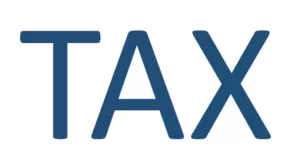There are two tax regimes in India for individuals, the old tax regime and the new tax regime. The old tax regime offers various tax deductions and exemptions, whereas the new tax regime provides a lower tax rate but without any tax deductions or exemptions.
For individuals with a salary under 5 lakhs
The new tax regime may be a better option as the tax rate is only 5% for income up to Rs. 5 lakhs. However, the old tax regime may be a better option for individuals with a salary under 7 lakhs as they can claim deductions such as standard deduction, Section 80C, and Section 80D.
For individuals with a salary under 10 lakhs
Both tax regimes may be suitable, but the old tax regime may offer more tax savings if the individual can claim deductions for home loan interest, education loan interest, and medical insurance premiums under Section 80E.
For individuals with a salary under 15 lakhs
The old tax regime may be a better option as they can claim deductions for home loan interest, education loan interest, and medical insurance premiums under Section 80E, and also claim deductions for contributions to the National Pension Scheme (NPS) under Section 80CCD.
For individuals with a salary under 20 lakhs
The old tax regime may be a better option as they can claim deductions for home loan interest, education loan interest, and medical insurance premiums under Section 80E, and also claim deductions for contributions to the National Pension Scheme (NPS) under Section 80CCD, and deductions for interest paid on loans for self-occupied property under Section 24(b).
Here are some ways to save tax under the old tax regime:
Claim deductions under Section 80C:
You can claim deductions of up to Rs. 1.5 lakhs by investing in tax-saving instruments such as Public Provident Fund (PPF), Equity Linked Savings Scheme (ELSS), National Savings Certificate (NSC), and Unit Linked Insurance Plan (ULIP).
Claim deductions under Section 80D:
You can claim deductions of up to Rs. 25,000 for the premium paid towards health insurance for yourself, your spouse, and dependent children. If you are paying the premium for your parents, you can claim an additional deduction of up to Rs. 25,000.
Claim deductions under Section 80E:
You can claim deductions for interest paid on education loans taken for higher studies. There is no limit on the amount of deduction, and you can claim it for a maximum of 8 years.
Claim deductions under Section 80G:
You can claim deductions for donations made to specified charitable organizations.
Invest in the National Pension Scheme (NPS):
You can claim deductions of up to 10% of your salary (up to a maximum of Rs. 1.5 lakhs) by investing in the NPS. The amount invested in the NPS is also eligible for an additional deduction of Rs. 50,000 under Section 80CCD(1B).
Claim deductions for interest paid on loans for self-occupied property under Section 24(b):
You can claim deductions of up to Rs. 2 lakhs for the interest paid on a home loan taken for a self-occupied property.
Claim deductions for rent paid:
If you are a salaried individual and do not own a house, you can claim deductions for the rent paid under Section 80GG.
Claim deductions for medical expenses:
You can claim deductions for medical expenses incurred for the treatment of specified diseases under Section 80DDB.
Claim deductions for interest earned on savings account:
You can claim deductions for interest earned on savings accounts up to a limit of Rs. 10,000 under Section 80TTA.
Claim deductions for medical insurance premiums paid for parents:
You can claim deductions for medical insurance premiums paid for parents up to a limit of Rs. 25,000 under Section 80D.
Claim deductions for treatment of disability:
You can claim deductions for expenses incurred on the treatment of specified disabilities of self or dependent under Section 80U.
Claim deductions for interest paid on education loans for siblings:
You can claim deductions for interest paid on education loans taken for siblings under Section 80E.
Claim deductions for donations made for scientific research:
You can claim deductions for donations made for scientific research under Section 80GGA.
Invest in tax-saving fixed deposits:
You can invest in tax-saving fixed deposits offered by banks to claim deductions under Section 80C. These deposits have a lock-in period of five years.
Invest in Sukanya Samriddhi Yojana:
You can invest in Sukanya Samriddhi Yojana to claim deductions under Section 80C. This scheme is meant for the education and marriage of girl children and offers an attractive rate of interest.
Claim deductions for contributions to political parties:
You can claim deductions for contributions made to political parties under Section 80GGC.
Claim deductions for treatment of specified diseases:
You can claim deductions for the expenses incurred on the treatment of specified diseases for self or dependent under Section 80DDB.
Invest in tax-free bonds:
You can invest in tax-free bonds issued by government entities such as NHAI, NABARD, and IRFC to earn tax-free interest income.
Claim deductions for expenses incurred on specified diseases for senior citizens:
You can claim deductions for the expenses incurred on the treatment of specified diseases for senior citizens under Section 80DDB.
Claim deductions for donations made to specified institutions:
You can claim deductions for donations made to specified institutions such as universities and colleges under Section 80G.
In addition to the above, you can also consider investing in Equity Linked Savings Schemes (ELSS), which are mutual funds that invest primarily in equities and offer tax savings under Section 80C. However, it is important to remember that investments should be made based on your financial goals, risk appetite, and investment horizon, and not just for tax saving purposes.
The maximum one can save on each section
Section 80C:
This section allows a deduction of up to Rs. 1.5 lakh on various investments such as Public Provident Fund (PPF), National Savings Certificate (NSC), Equity Linked Savings Scheme (ELSS), Life Insurance Premium, and more.
Section 80D:
This section allows a deduction of up to Rs. 25,000 for the medical insurance premium paid for self, spouse, and children. An additional deduction of Rs. 25,000 is available for medical insurance premium paid for parents. If the parents are senior citizens, the deduction limit is increased to Rs. 50,000.
Section 80E:
This section allows a deduction of interest paid on education loans taken for higher education for self, spouse, and children.
Section 80G:
This section allows a deduction for donations made to certain charitable organizations.
Section 80TTA:
This section allows a deduction of up to Rs. 10,000 on interest earned on savings accounts.
Section 80GGA:
This section allows a deduction for donations made for scientific research or rural development.
Section 80GGC:
This section allows a deduction for donations made to political parties.
Section 80DDB:
This section allows a deduction for expenses incurred on the treatment of specified diseases for self or dependent.
By using these sections, taxpayers can save a considerable amount of tax. For example, if a person invests Rs. 1.5 lakh in tax-saving instruments under Section 80C, he can save up to Rs. 46,800 (assuming he falls in the 31.2% tax bracket). Similarly, if a person pays Rs. 25,000 as medical insurance premium for self and Rs. 50,000 for his senior citizen parents, he can save up to Rs. 15,600. The total tax saved under these sections can vary depending on the amount of investment, income level, and the tax bracket of the taxpayer.


